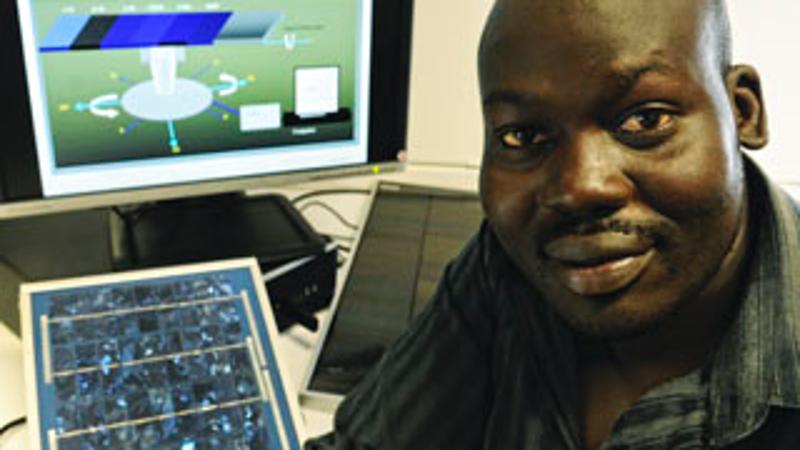
A QUT PhD student is installing a dynamic "sunflower" solar system on a roof at QUT's city campus in a bid to optimise the performance of solar energy systems and save householders and businesses money on high-cost, peak-demand energy bills.
Stephen Kel, from Queensland University of Technology's (QUT) School of Engineering Systems, has designed the purpose-built dynamic solar infrastructure to act like a sunflower and move to follow the sun.
The six-panel device will be installed on the roof of QUT's S Block on Gardens Point Campus with the aim of finding the optimal orientation and elevation for solar devices.
"The system we are installing on S Block uses six commercially available panels across different solar technologies to capture the maximum intensity of sunlight at varying points of orientation and elevation," Mr Kel said.
"The primary aim is to find the best point so that utility providers can install their solar systems at exactly the right orientation and elevation to help reduce demand spikes during peak periods of the day.
"The secondary aim is to find the best solar technology that gathers the maximum energy for householders and businesses to help reduce their demand during peak usage times."
Mr Kel is focussing on different versions of three types of solar technologies: silicon, thin film, and organic solar technology.
"Silicon solar technology is the most common form. It is the most mature technology so most households with solar systems would have it, but it is also the most expensive," Mr Kel said.
"Thin film technology is made by depositing one or more thin layers of sunlight absorbing materials such as cadmium, amorphous, or silicon. It is not widely used for household systems yet because it is not yet as efficient as silicon. It needs a bigger area than silicon technology but it could work out to be the cheapest option.
"We are particularly interested in thin film technology because most thin film devices are less susceptible to temperature changes and actually perform better at higher temperatures while also performing well in low light."
Mr Kel said organic solar was an emerging technology because of cost and sustainability and could be the cheapest form.
"It mimics photosynthesis and is made from organic molecules or materials. However, so far its efficiency is low; it's unstable and has a short lifespan of about two years," he said.
Mr Kel said the results of the study would be known around September.
"We should be able to recommend how to have solar panels installed to produce the most amount of power and to reduce demand spikes. This will help shield householders and business owners from further energy price rises," he said.
"We will also target electricity retailers who face huge demand from users during peak hours. The industry is looking to solar power to reduce demand in these peaks instead of building more fossil-fuelled power stations.
"This information could be helpful to existing solar energy system owners if their systems are on mounting brackets."
Media contact: Niki Widdowson, QUT media officer, 07 3138 1841 or n.widdowson@qut.edu.au.




